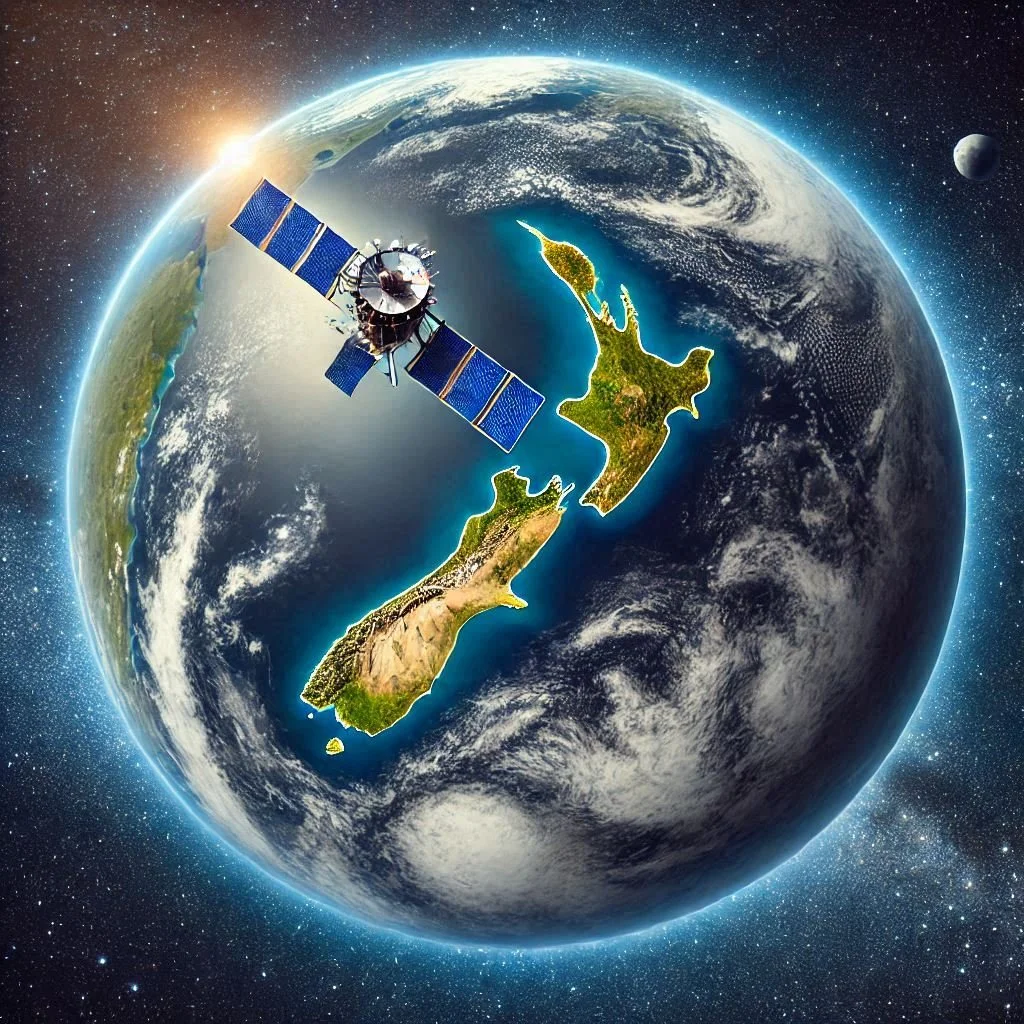End-of-Life Management in Geostationary Space, the Role of the Graveyard Orbit in Satellite Disposal
As the space industry expands, managing satellites after their mission ends is just as crucial as launching them into orbit. Satellites in geostationary orbit (GEO) deliver essential services, communications, weather forecasting, and broadcasting, but each one eventually reaches the end of its operational lifespan. When that occurs, engineers must find a safe and responsible method to remove them from active orbital paths.
The solution? The "graveyard orbit."
This orbit is around 300km above the GEO belt and acts as a final resting place for satellites that are no longer working. Moving inactive satellites to this higher orbit helps reduce collision risks and frees up valuable space in GEO for future missions. It’s a practical approach to maintaining orbital sustainability and preventing long-term congestion.
To reach the graveyard orbit, satellites use their remaining fuel to perform a controlled manoeuvre, boosting themselves out of GEO. Once there, their systems are shut down, and they remain as passive objects. While no longer operational, these spacecrafts continue to orbit Earth far from the busy lanes of active satellites, allowing the critical geostationary region to stay safe and accessible for decades to come.
Why Do We Use the Graveyard Orbit?
As the number of satellites in GEO continues to increase, so does the need to keep that orbital zone clean and operational. GEO hosts some of the most vital satellites in space, supporting global communications, television broadcasting, weather prediction, and defence systems. However, space in GEO is limited, and when a satellite reaches the end of its service life, it can pose a hazard if left there.
That’s why operators use the graveyard orbit, a region about 300 km above GEO, as the final resting place for decommissioned satellites. Moving inactive spacecraft there prevents orbital congestion and frees up space for future missions.
It also greatly diminishes the risk of collisions. A malfunctioning or drifting satellite in GEO could collide with an active one, creating dangerous debris scattered across orbital lanes. Even small fragments can cause serious damage at high velocities.
Lastly, the graveyard orbit simplifies traffic management. With fewer inactive objects occupying critical GEO slots, satellite operators can more efficiently coordinate the positioning and movement of active satellites. In short, the graveyard orbit helps ensure that space remains organised, operational, and sustainable for the long-term future of satellite services.
How Satellites Are Moved to the Graveyard Orbit
When a satellite approaches the end of its operational life in GEO, mission planners need to ensure it can be safely moved to a graveyard orbit. This process begins well before the final command is issued. Engineers carefully monitor the satellite's remaining fuel throughout its lifespan to make sure there is enough for a final manoeuvre at the end.
The first step is a thorough end-of-life assessment. Operators evaluate the satellite’s remaining fuel levels, propulsion system health, and overall stability to ensure it can complete the relocation safely. Once approved, the satellite performs a controlled burn using its thrusters, raising its altitude by approximately 300 km above GEO, well beyond the paths of active satellites.
After reaching the graveyard orbit, safety protocols are put in place to prevent future risks. The satellite’s batteries are fully discharged to eliminate the risk of explosions caused by stored energy. This step is crucial, as even a defunct satellite can still pose hazards if energy remains onboard.
Finally, all operational systems are permanently shut down. The satellite becomes a passive object, parked safely out of the way. Though it no longer functions, it remains in a stable orbit, allowing GEO to stay clear for active and future missions.
Fuel Planning and Limitations
Fuel management is one of the most important parts of satellite mission planning, especially when it comes to how a spacecraft will be safely decommissioned. Without enough fuel reserves near the end of a satellite’s operational life, moving it to a graveyard orbit cannot be done. This leads to long-term issues, as inactive satellites left in GEO pose collision risks and add to the growing problem of space debris.
Operators must carefully estimate fuel consumption throughout the mission to ensure enough propellant is reserved for a final boost into the graveyard orbit. However, even with detailed planning, unexpected failures can happen. A sudden hardware fault, software problem, or communication breakdown may prevent the satellite from performing its disposal manoeuvre. These failures can leave the satellite stranded in GEO, which has serious consequences for orbital traffic management.
There are also cost and design trade-offs to weigh up. Satellites built with larger fuel reserves tend to be heavier, which makes them costlier to launch. However, that extra expense provides greater reliability at the end of the mission. By investing in solid fuel planning from the start, operators lower the risk of spacecraft being abandoned and support long-term sustainability in Earth’s busiest orbital region.
Life After Graveyard Placement
After being moved to the graveyard orbit, retired satellites no longer receive commands or perform functions; they become passive space objects. However, they continue to endure the harsh conditions of space, including constant exposure to solar radiation and micrometeoroid impacts, which gradually degrade their structure over time. Without active propulsion, these satellites also experience orbital drift caused by gravitational forces and solar radiation pressure. Although they are no longer operational, they are still tracked in orbital catalogues to prevent accidental collisions. While attention to them diminishes, their locations remain known to support ongoing space traffic management and orbital safety.
Emerging Technologies and the Future of Space Debris Management
Managing orbital debris has become a top priority as space becomes more crowded with satellites, rockets, and other hardware. While the graveyard orbit provides a temporary and practical solution for relocating decommissioned satellites in GEO, it is not a long-term fix. Emerging technologies are now being developed to make end-of-life disposal more autonomous, efficient, and sustainable across all orbital regimes.
One promising advancement is electric propulsion. Unlike traditional chemical thrusters, electric propulsion systems are highly efficient and use significantly less fuel. This not only prolongs the operational life of satellites but also provides enough reserve thrust for safe relocation to a disposal orbit. Their low-thrust, high-efficiency nature makes them particularly attractive for future satellite missions.
Another innovation is the implementation of autonomous deorbit systems. These systems are designed to operate independently of ground control, allowing satellites to monitor their condition and initiate end-of-life procedures automatically. This enhances reliability and diminishes the risk of a failed decommissioning due to communication loss or system failure.
A more proactive approach involves debris capture mechanisms. Several space agencies and private companies are developing dedicated spacecraft equipped with nets, robotic arms, or harpoons designed to remove non-functional satellites from orbit entirely. These solutions could greatly reduce orbital clutter and decrease reliance on graveyard orbits.
Looking ahead, the future of space debris management will require a combination of technology, regulation, and international cooperation. Stricter global rules on satellite design and disposal, along with innovations in propulsion and autonomous systems, will be essential. By adopting these advancements and collaborating across borders, the space industry can build a cleaner, safer, and more sustainable orbital environment for future generations.
Looking Ahead: A Cleaner Orbital Future
The graveyard orbit remains an essential tool for managing retired satellites and safeguarding the geostationary belt. As the number of spacecraft in orbit continues to increase, relying solely on this method will no longer suffice. The future of sustainable space operations depends on a combination of smarter satellite design, autonomous disposal systems, and active debris removal technologies. These innovations will help reduce collision risks and prevent orbital congestion. However, technology alone cannot solve the issue. Long-term orbital sustainability will require strong international cooperation, clear regulatory standards, and shared responsibility among spacefaring nations and commercial operators. By working together to adopt best practices and enforce disposal guidelines, the global space community can protect valuable orbital regions like GEO. A cleaner, more secure orbital environment will ensure that future generations can continue to benefit from space-based services, exploration, and scientific discovery for many decades.
Conclusion
The graveyard orbit is crucial for the long-term sustainability of GEO, which is one of the most vital areas in space. By relocating decommissioned satellites to a designated disposal zone above GEO, operators help prevent collisions, lower space debris risks, and free up valuable orbital slots for future missions. This proactive approach not only supports the current satellite systems but also boosts the overall safety and reliability of space operations.
However, as space activities continue to grow rapidly with more countries, companies, and constellations entering orbit, the challenges of orbital congestion and debris management will become more pressing. The graveyard orbit is an important part of the solution, but it must be complemented by developing technologies such as autonomous disposal systems, electric propulsion, and active debris removal.
Moreover, international cooperation and consistent policy enforcement are essential. Sustainable space relies on shared responsibility, international standards, and a commitment to end-of-life planning from all space operators. By merging technological innovation with responsible practices, we can protect GEO and other orbital regions for future generations. Although simple in concept, the graveyard orbit represents a forward-looking strategy to keep our shared space environment clean, functional, and accessible in the long term.



